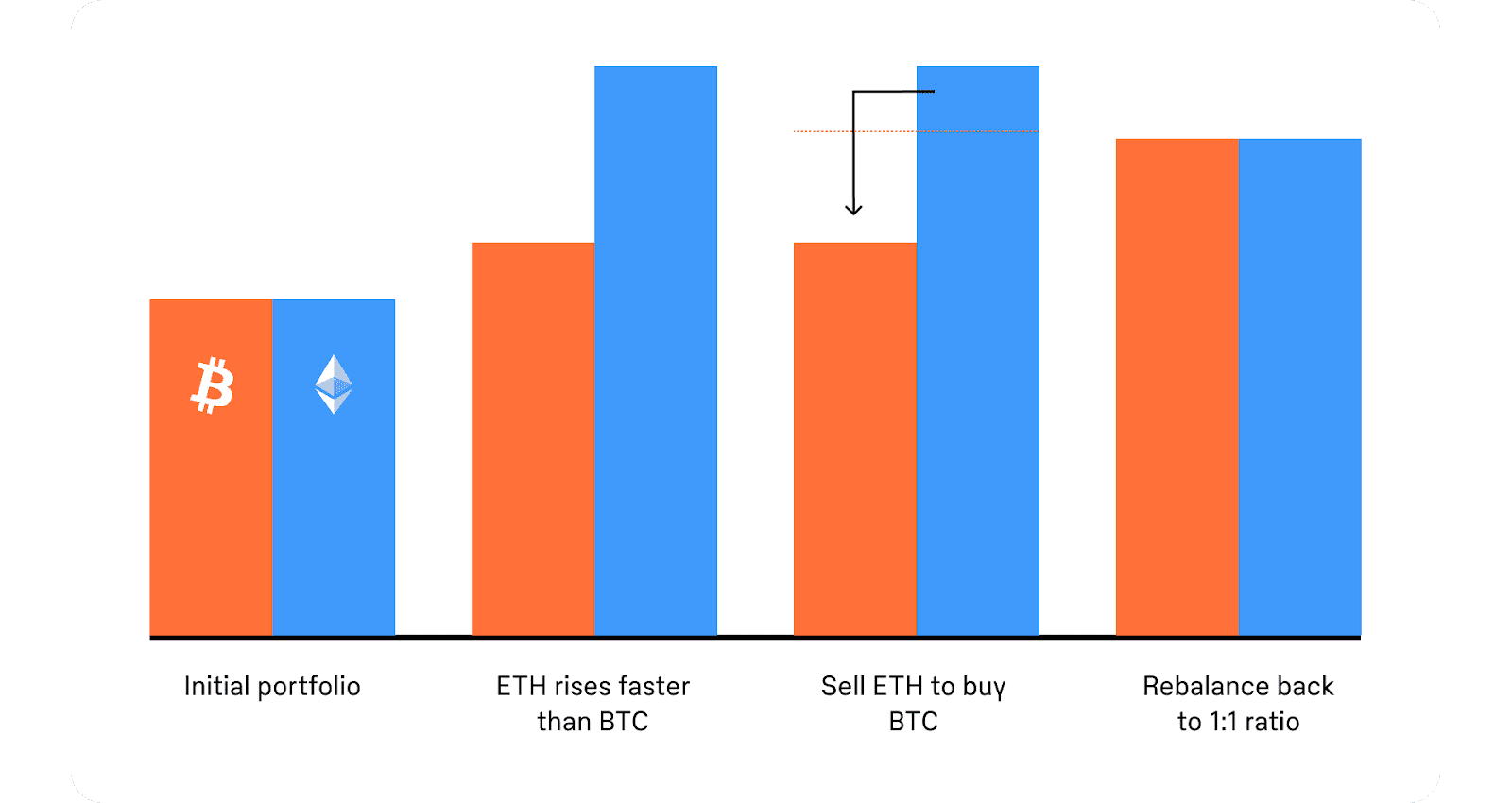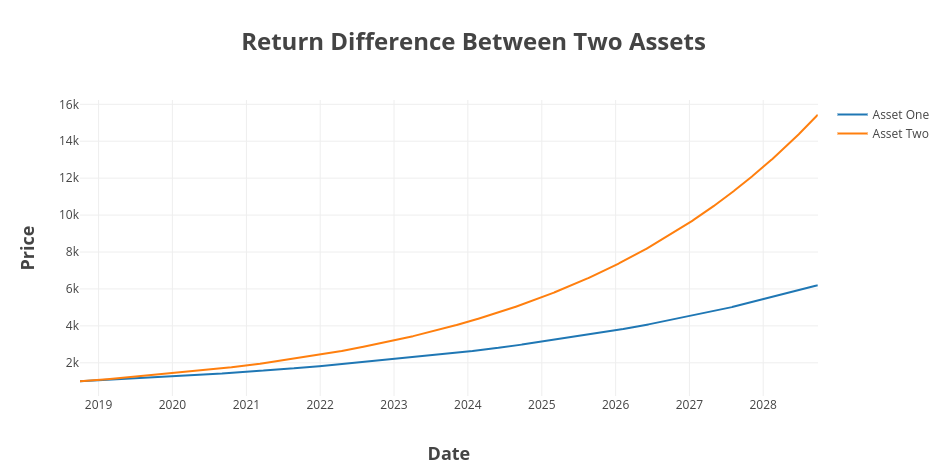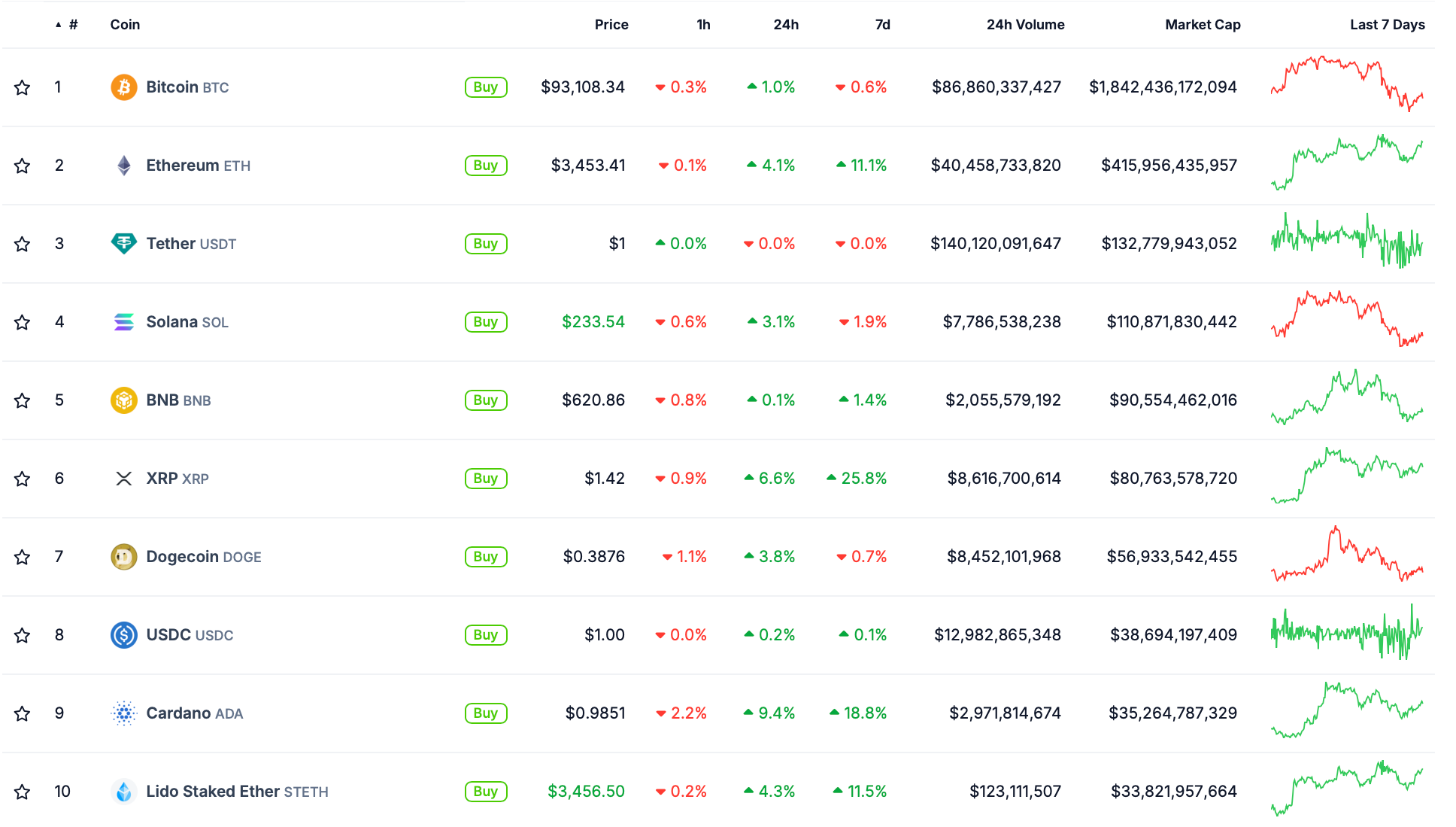Basic guide to crypto rebalancing strategies

Don't put all your eggs in one basket is an old adage, but it is perfectly applicable to crypto. Wise investors use asset diversity to get risk-adjusted returns. However, as cryptocurrencies are fluid, preserving the desired allocation is a constant need. The dollar value of one coin may soar or plunge, affecting the overall performance. Certain portfolio strategies restore the balance — discover the basics in our guide.
What is portfolio rebalancing?
Finance professionals have used rebalancing for decades. In crypto, it is based on the ideal proportion between your coins and tokens. This term is self-explanatory: within the combined portfolio value, each asset gets a specific share. Whenever it deviates from the target allocation, the holder restores the latter through trades in a manual or automatic fashion.
Digital assets are notorious for gaining and losing value all the time. Rebalancing prevents them from straying away from the original proportion within an investment portfolio. While the market could get hectic, crypto rebalancing will protect the equilibrium between all of your weightings.

How to analyze your crypto portfolio
Suppose a token you own grows threefold. You could capitalize on the bull run, hoping it lasts forever, but what next? Portfolio rebalancing means taking the long view. Instead of relying on one winner, it prescribes redistributing the gains to other, less robust, assets in your crypto portfolio.
With portfolio rebalancing, you adjust the risk level, so your holdings return to the original asset weightings. Rebalancing occurs periodically and includes taking profits, stopping losses, buying low, and selling high.
Basics of asset allocation
Suppose your portfolio consists of four cryptocurrencies (BTC, ETH, LTC, and XMR). A possible approach is having them spread evenly (25% each). This stake is the target for every instance of crypto rebalancing.
As different cryptocurrencies have different values, you should assess their weight in a fiat/base currency. If your entire portfolio is worth $100,000, each rebalancing period will bring each segment back to $25,000. With a dual-asset portfolio, this is even easier:
Advantages of crypto portfolio rebalancing

A rebalanced portfolio limits exposure to risk — both future losses and future gains stay calibrated. After selling the assets that fall short, so you can reinvest your funds into high achievers. At the same time, you sell coins or tokens that jump higher than they should, making room for other assets.
Another merit is cryptocurrency portfolio diversification. When the winnings exceed your expectations, you redirect the extra money to more assets, which also lowers risk exposure. The number of assets is inversely proportional to the level of risk. A diverse portfolio gives you more opportunities to compensate for a losing coin or token.
Finally, regular crypto rebalancing prevents dangerous illusions. For crypto investors, emotional attachment is inexcusable. You may get fascinated with a cryptocurrency that looks good on paper and then see a disappointing lack of demand. If an asset you hold does not generate profits, it must be discarded without regret.

Disadvantages of crypto portfolio rebalancing
Rebalancing is a risk mitigation technique, but it relies on momentum. This comes in handy when high performers rise and underdogs fall, so you sell and buy them, respectively. Yet the market does not always follow this pattern. Restoring the preset asset allocation may backfire.
There's no guarantee your dark horse won't shoot up, while the highest performer won't fall. You could end up selling a high achiever that will continue soaring and inflating your opportunity costs. Even worse, you could redirect your capital in favor of an asset that will fail miserably.
If time proves you wrong, periodic rebalancing will bring lost value instead of capital gains. As a precaution, experts recommend selling assets as soon as their narratives start falling apart. If you hold a token that ceases to be the leader or its network goes haywire, get rid of it.
For example, the infamous LUNA had the 9th biggest market cap in January 2022. As of November 27, 2024, the leaders include:

Another hurdle is transaction costs. The shorter your rebalancing interval, the more you spend just to cover the associated fees. Frequent rebalancing does not suit traders from countries with exorbitant taxes, so they should consider other existing trading strategies.
Popular crypto rebalancing strategies
Crypto portfolio rebalancing is not a one-size-fits-all approach. Weigh up the pros and cons of the following methods:
Threshold portfolio rebalancing
This investment plan imposes strict tolerance bands to limit the movements of each asset. For instance, you could cap all rises and falls at 10%. Once an asset move breaches this threshold, you either sell or buy it, depending on the situation.
Suppose your asset allocation includes BTC and ETH, and you want an equal proportion. You could allow a 5% deviation, so 55/45 is the maximum allowed split. If BTC drops, you sell it to purchase ETH and the other way around.
In this scenario, the efficiency of your strategy depends on two factors – the market and the threshold width. You can make your threshold high or low, but neither option is fail-safe.
- The lower your threshold, the less volatility you experience and the lower the returns. Rebalancing will be more frequent, while the transaction costs will rise. Obviously, high-volatility cryptos are more likely to breach low thresholds.
- A high threshold makes breaching less likely, allowing higher volatility and returns. As the need for rebalancing appears less often, your overall costs are lower.
Constant proportion portfolio insurance (CPPI)
This crypto rebalancing strategy requires turning a portion of your funds into stablecoins. The core principle is the linear relationship between risk and wealth. The more you gain, the dicier it gets. Allocating a segment of the portfolio to stablecoins protects it from excessive volatility.
What if you only own cryptocurrencies and the market surges? At first glance, you should be happy to rake in a hefty profit. The downside is that one retrace can wipe it all away and leave you in the red.
Suppose an investor adheres to the 50/50 proportion, having $10,000 worth of crypto and $10,000 worth of stablecoins. If the crypto market turns bearish with a 30% crush, they will only lose around $3,300 worth of crypto. If they had invested $20,000 in crypto alone, the losses would be doubled. The presence of stablecoins shields you from significant losses and lets you reinvest in crypto for rebalancing.
Calendar (periodic) crypto rebalancing
The strategy focuses on time instead of proportions or value. Crypto portfolio rebalancing happens at predetermined intervals – hourly, daily, weekly or monthly. The optimal frequency depends on the same factors that influence threshold rebalancing.
With a shorter rebalance period, come higher transaction costs, but the upside is a lower portfolio drift. Longer intervals mean you pay less for the adjustment, but the portfolio drift grows. What to choose depends on your attitude to drifting — how far can it stray away from the original or desired allocation?
This method is one of the simplistic portfolio management strategies. There is no need for calculating risk or keeping track of time. All we need to do is launch the rebalancing procedure based on your schedule.
Pros and cons of hourly portfolio rebalancing
According to Shrimpy, the efficiency of this rebalancing strategy is inversely proportional to the trading costs. With a 0.25% fee, it underperforms daily and weekly crypto portfolio adjustments. As the trading fee approaches zero, this strategy becomes the frontrunner. Hence, traders should carefully gauge all associated costs before choosing such aggressive asset allocation.
Key stages in portfolio rebalancing
The following steps are applicable to any strategy, be it a calendar, CPPI, or threshold rebalancing of your cryptocurrency portfolio.
Step 1 — Choosing rebalancing strategy
The type and frequency of realigning primarily depend on your style, goals, risk tolerance, and the specifics of each asset class. In theory, investments with higher risk – for example, highly volatile tokens, new players on the market, and coins with limited market cap – should be rebalanced more often. When choosing a periodic rebalancing approach, the costs come first.
Step 2 — Finding desired asset allocation
Consider your asset mix and balance. Investors who have already started trading may divide their existing mix into the allocation aligned with their risk management strategy and asset specifics. For instance, you may allocate the largest portion (40%) of your portfolio to BTC, leave 20% for ETH, and divide the remainder between four altcoins evenly (10% each).
Step 3 — Buying and selling assets
Based on your chosen strategy, readjust the weightings by buying and selling your assets. You can do it manually or automatically, with the help of a rebalancing bot. In the first case, you will need to execute transactions one by one as quickly as possible, so they are close together.
It is advisable to record all transactions when you rebalance your portfolio. This will help you compare investment performance afterward. In the United States, crypto investors also have to monitor all their capital gains for tax purposes, as required by the Internal Revenue Service.
Crypto rebalancing tools
Manual crypto rebalancing is demanding, but investors can use risk management assistants that connect to popular exchanges. A rebalancing bot that works in the dual mode can maintain a one-to-one proportion in your portfolio every 5 minutes. Such systems support both spot and leveraged trades.

Some multi-coin bots can balance up to ten assets, bringing each of them to your desired level. Note that trading on margin, regardless of the number of assets, will ramp up the risks.
Which type of rebalancing is the best investment strategy?
Manual adjustment and crypto portfolio rebalancing tools can help you mitigate risk in this capricious market. However, each strategy has pros and cons, and there are no universal recipes for stress-free trading. Analyze your investment style, risk tolerance, and costs, to find the best way to rebalance your portfolio.



